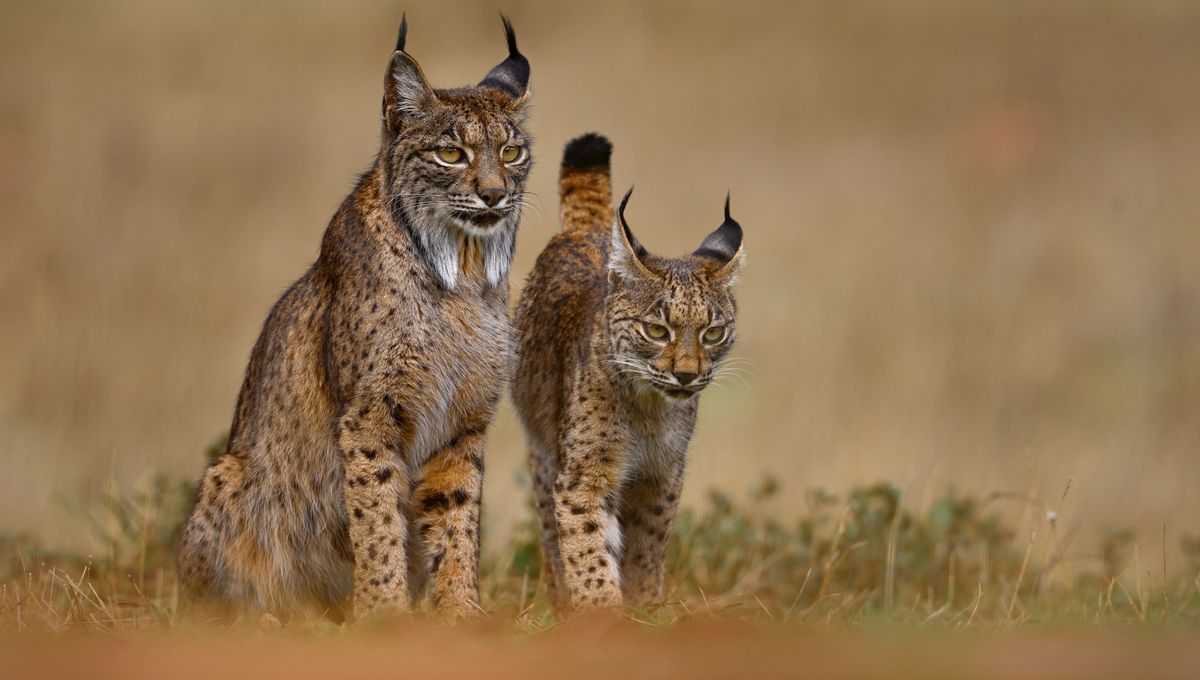
One of the rarest cats in the world, the Iberian lynx was once on the brink of extinction. Now, thanks to intense conservation efforts, they’ve clawed their way back from being classed as an endangered species to a vulnerable one.
The change in status was announced by the International Union for Conservation of Nature (IUCN), which has a “Red List” that acts as an information source on the extinction risk status of animals across the world. According to the IUCN, the number of adult Iberian lynx has shot up from just 62 in 2001 to 648 in 2022.
Iberian lynxes were once far more widespread across the Iberian Peninsula, playing a carefully balanced role in the ecosystem as predators. However, with the 20th century came decades of hunting and loss of habitat to agricultural land, to the point where at the start of the new millennia, only two isolated breeding populations remained in southern Spain.
Then, in the early 2000s, a concerted effort began between governments and non-governmental organizations to bring the cats back from the brink of extinction.
This involved bumping up the numbers of its primary prey, the European rabbit – which is also endangered, making this a 2-for-1 conservation situation, despite the bunnies getting, y’know, gobbled up – bringing their scrubland and forested habitats back to life, and cracking down on hunting and road safety.
As a result, the Iberian lynx has expanded its territory from just 449 square kilometers (279 square miles) in 2005 to at least 3,320 square kilometers (2,063 square miles) to date, and with the help of breeding programs, the total population is now estimated to be over 2,000.
“The significant recovery of the Iberian lynx demonstrates that even the most threatened species can be brought back from the brink of extinction through committed, science-based conservation action and provides hope for those working to protect wildlife across the globe,” said Sarah Durant, a professor at The Zoological Society of London’s Institute of Zoology, in a statement.
But while the change in status of this distinctive cat species is a good sign, the Iberian lynx isn’t out of the woods just yet. That’s largely due to diseases threatening both the lynxes and their prey, but also the looming impact of climate change and illegal poaching.
“There is still a lot of work to do to ensure that Iberian lynx populations survive and the species recovers throughout its indigenous range,” said Francisco Javier Salcedo Ortiz, coordinator of the LIFE Lynx-Connect project, which led the conservation action. “Looking ahead, there are plans to reintroduce the Iberian lynx to new sites in central and northern Spain.”
There is hope that, all being well, the Iberian lynx could become one of the greatest conservation and recovery stories yet, with the IUCN stating that “enough suitable habitat remains that the species could reach Fully Recovered status in 100 years”.
Source Link: Iberian Lynx No Longer Endangered After Remarkable Recovery